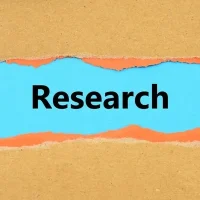The International Union for Conservation of Nature (IUCN) was established in 1948, making it one of the oldest and most influential environmental organizations in the world. Founded in Fontainebleau, France, the IUCN emerged from a growing recognition of the need to protect natural resources and biodiversity in the wake of World War
Environmental Conservation and Human Well-being
The organization works to promote sustainable practices that benefit both people and the planet. This dual focus is reflected in its commitment to fostering partnerships across various sectors, including government, civil society, academia, and the private sector.
Promoting Sustainable Practices
By advocating for policies that prioritize conservation and sustainable resource management, IUCN aims to create a world where nature thrives alongside human development.
Partnerships for a Sustainable Future
The organization’s efforts are geared towards creating a better future for all, and its work is guided by a strong commitment to sustainability and environmental stewardship.
Achieving a Balanced World
The Collaborative Approach of IUCN
Collaboration is at the heart of IUCN’s approach to conservation. The organization recognizes that no single entity can tackle the complex challenges facing our planet alone. By fostering collaboration among diverse stakeholders, IUCN creates a platform for sharing knowledge, resources, and best practices.
This collaborative model is essential for addressing issues such as climate change, habitat loss, and species extinction, which require coordinated efforts across borders and sectors. One of the key strategies employed by IUCN is the establishment of regional and thematic networks that bring together experts and practitioners from various fields. These networks facilitate dialogue and collaboration on specific conservation challenges, allowing for the exchange of ideas and innovative solutions.
For instance, the IUCN’s World Commission on Protected Areas (WCPA) brings together professionals dedicated to advancing protected area management globally. Through workshops, conferences, and collaborative projects, WCPA members share their experiences and develop guidelines that help improve conservation outcomes in protected areas worldwide.
Partnerships and Alliances: Working Together for Conservation
IUCN’s success in conservation is largely attributed to its ability to forge strategic partnerships and alliances. By collaborating with governments, NGOs, indigenous communities, and the private sector, IUCN amplifies its impact and reaches a broader audience. These partnerships are built on mutual respect and shared goals, allowing for a more comprehensive approach to conservation that considers social, economic, and environmental factors.
One notable example of IUCN’s partnership approach is its collaboration with the Global Environment Facility (GEF). This alliance has led to numerous projects aimed at conserving biodiversity and promoting sustainable land management in developing countries. By pooling resources and expertise, IUCN and GEF have successfully implemented initiatives that protect critical ecosystems while also supporting local communities’ livelihoods.
Such partnerships demonstrate how collaborative efforts can lead to innovative solutions that benefit both nature and people.
Success Stories: The Impact of IUCN’s Collaborative Model
The collaborative model employed by IUCN has yielded numerous success stories that highlight its effectiveness in driving positive change for conservation. One such example is the restoration of the critically endangered Arabian Oryx. In the 1970s, this species faced extinction due to overhunting and habitat loss.
Through a collaborative effort involving IUCN, local governments, and conservation organizations, a successful breeding program was established. The Arabian Oryx was reintroduced into its natural habitat in Oman and other Gulf states, marking a significant milestone in conservation history. Another success story is the establishment of marine protected areas (MPAs) around the world.
IUCN has played a pivotal role in advocating for MPAs as a means to safeguard marine biodiversity. Through partnerships with governments and local communities, IUCN has facilitated the designation of numerous MPAs that protect vital ecosystems while also supporting sustainable fishing practices. These efforts have not only contributed to the recovery of marine species but have also enhanced the resilience of coastal communities dependent on healthy oceans.
Challenges and Opportunities in Conservation Collaboration
Challenges in Conservation Collaboration
Navigating these complexities requires strong communication skills and a willingness to find common ground among diverse interests. Despite these challenges, there are also numerous opportunities for enhancing collaboration in conservation.
Opportunities for Enhanced Collaboration
The rise of technology has opened new avenues for data sharing and communication among stakeholders. For instance, digital platforms can facilitate real-time monitoring of biodiversity and habitat changes, enabling more informed decision-making.
The Role of Technology in Conservation
Additionally, increased awareness of climate change has galvanized support for conservation efforts globally, creating a favorable environment for collaboration among various sectors.
Global Support for Conservation Efforts
How Individuals and Organizations Can Get Involved
Individuals and organizations looking to contribute to conservation efforts can take several actionable steps to get involved with IUCN or similar initiatives. One effective way is to participate in local conservation projects or volunteer with organizations focused on environmental protection. Many NGOs offer opportunities for individuals to engage in hands-on conservation work, whether through habitat restoration, wildlife monitoring, or community education programs.
Moreover, individuals can advocate for conservation policies at local and national levels by engaging with policymakers and raising awareness about environmental issues within their communities. Joining or supporting organizations like IUCN can amplify one’s impact by contributing to larger-scale initiatives that address global challenges. Additionally, organizations can explore partnership opportunities with IUCN or other NGOs to collaborate on projects that align with their missions.
In conclusion, the International Union for Conservation of Nature exemplifies how collaboration can drive meaningful change in conservation efforts worldwide. By fostering partnerships among diverse stakeholders and employing a collaborative approach, IUCN has made significant strides in protecting biodiversity and promoting sustainable development. While challenges remain, there are ample opportunities for individuals and organizations to engage in conservation efforts that benefit both nature and humanity.
Through collective action and shared commitment, we can work towards a more sustainable future for our planet.








































